Disclosure: This article contains affiliate links. We may earn a commission from purchases at no extra cost to you, which helps our travel content.
As someone who typically documents the world's most dramatic geological formations, pivoting my analytical lens to the subtle topography of Wisconsin's Fox River Valley presents an intriguing change of pace. While Appleton lacks the volcanic drama that usually draws my attention, this midwestern gem offers its own form of geological storytelling—one shaped by ancient glacial movements rather than magmatic forces. The Fox River itself, cutting through the heart of the city, represents thousands of years of hydrological evolution that would fascinate any earth science enthusiast. Having spent a recent autumn weekend here while visiting a former colleague from my QA testing days, I was surprised by the area's rich tapestry of history, culture, and natural beauty. For couples seeking a budget-friendly weekend escape where science, history, and small-town charm converge, Appleton delivers unexpected discoveries at every turn.
The Geological Underpinnings of Appleton
While my professional fascination typically centers on volcanic formations, Appleton's landscape tells an equally compelling story of geological processes—albeit at a significantly slower pace than an erupting caldera. The Fox River Valley was sculpted approximately 10,000 years ago as the last glacial period retreated, leaving behind a remarkably flat landscape punctuated by this winding waterway.
The river itself follows the path of least resistance through glacial till and outwash deposits, creating the foundation upon which Appleton would eventually be built. For the observant visitor, evidence of this glacial history appears in subtle elevation changes throughout the city and occasional erratics—large boulders transported and deposited by ice sheets—that can be spotted in parks and natural areas.
What particularly captured my attention was the Lawrence University campus, situated on a bluff overlooking the Fox River. This elevated position offers an excellent vantage point to observe the river valley's contours. I spent a contemplative hour on a bench near Main Hall, mapping the landscape with the same methodical approach I'd use at a volcanic site, albeit with less sophisticated equipment than my usual field notebook, which has survived fieldwork in some of Earth's most extreme environments.
For couples with even a passing interest in geological processes, I recommend following the river trail system, where informational placards occasionally highlight the area's natural history. The juxtaposition of this ancient riverbed against the industrial and cultural developments that followed creates a fascinating timeline of human adaptation to natural landscapes—a pattern I've documented across volcanic regions worldwide, though manifesting quite differently here in Wisconsin's heartland.
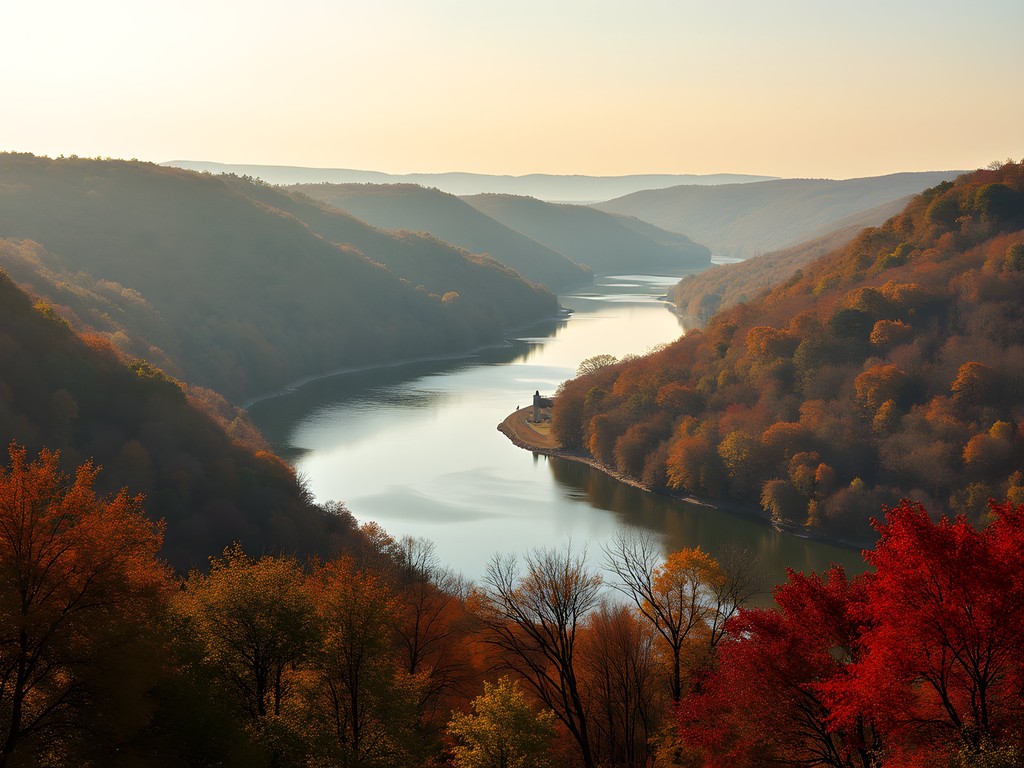
💡 Pro Tips
- Visit the Lawrence University campus for the best elevated views of the Fox River Valley's glacial formation
- Look for glacial erratics (large transported boulders) in Appleton's parks as evidence of ice age activity
- Walk the Fox River Trail system early morning for both geological observation and wildlife spotting
Paper History: The Industrial Backbone
As a quality assurance professional accustomed to documenting minute details, I found the Paper Discovery Center a surprisingly compelling attraction. Appleton's industrial heritage is inextricably linked to paper production—a relationship that parallels how volcanic regions often develop industries around their unique natural resources.
The museum occupies a former paper mill directly on the Fox River, where the building's industrial architecture tells as much of a story as the exhibits within. What impressed me most was the meticulous documentation of the papermaking process, from raw materials to finished products. The technical precision reminded me of my own methodical approach to volcanic monitoring, though with considerably less risk of catastrophic eruption.
The historical exhibits detail how the Fox River's natural power was harnessed through a system of locks and dams—an engineering achievement that transformed the region economically. This human-nature interaction mirrors patterns I've observed in volcanic regions worldwide, where communities adapt to and utilize geological features for development.
For visitors with technical inclinations, the working paper mill demonstration provides a fascinating glimpse into industrial processes. I was particularly impressed by the volunteer docents, many retired from the paper industry, who explained complex machinery with the same attention to detail I apply to volcanic monitoring equipment.
The center also houses an unexpected geological connection: displays showing how glacial deposits provided specific minerals that influenced local water chemistry, which in turn affected paper quality. These interconnections between geology, hydrology, and human industry exemplify the complex systems analysis I typically apply to volcanic regions, though manifested in a distinctly midwestern context.
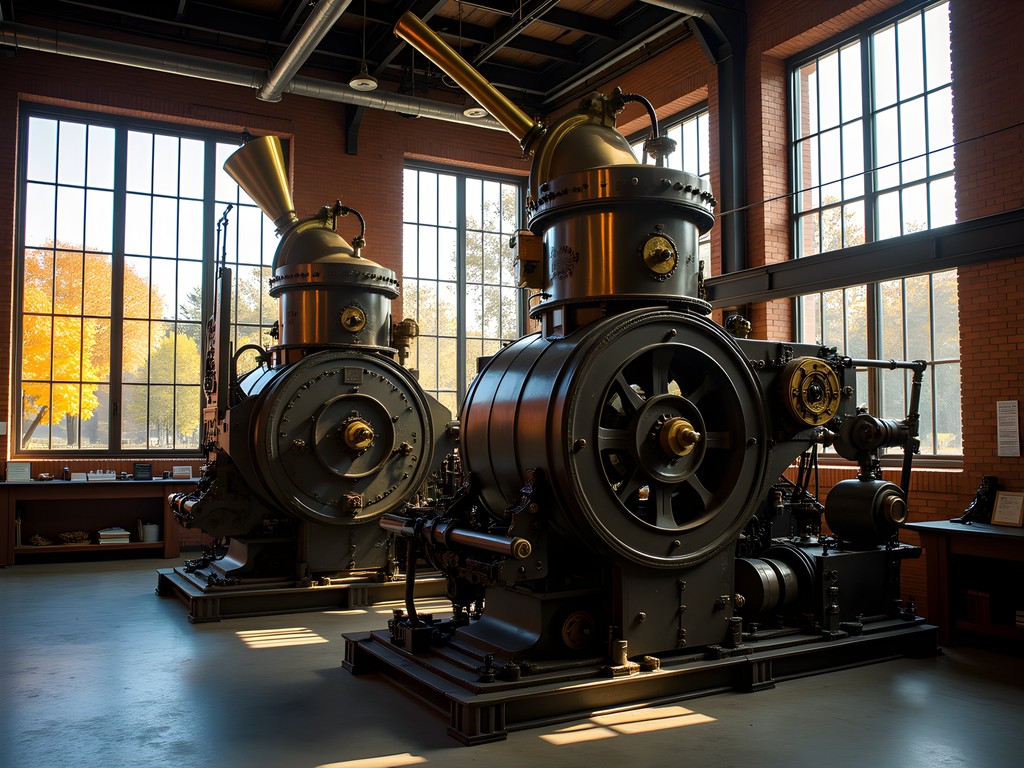
💡 Pro Tips
- Visit during a paper-making demonstration for the full sensory experience
- Allow at least 90 minutes to properly appreciate the technical exhibits
- Don't miss the rooftop observation area for views of the Fox River's lock system
Unexpected Cultural Depth: The Trout Museum and Houdini
Perhaps the most unexpected discovery during my Appleton weekend was the remarkable cultural depth for a city of its size. The Trout Museum of Art houses a collection that, while modest compared to metropolitan institutions, displays a curatorial precision I found admirable. During my visit, an exhibition on regional landscape artists revealed fascinating interpretations of the very glacial topography I had been analyzing earlier that day—a convergence of art and geology that particularly resonated with me.
What truly captured my attention, however, was Appleton's connection to Harry Houdini. The History Museum at the Castle (housed in a former Masonic temple with its own fascinating architectural elements) contains a meticulously researched Houdini exhibition that approaches its subject with scientific rigor. As someone who documents volcanic changes with exacting standards, I appreciated the museum's commitment to separating historical fact from accumulated mythology.
The exhibition methodically deconstructs Houdini's illusions while preserving their wonder—a balance that reminded me of explaining volcanic phenomena to non-specialists. The museum even features interactive elements where visitors can attempt simplified versions of Houdini's escapes, which I documented using my reliable travel camera. The camera's quick autofocus proved particularly useful in the museum's variable lighting conditions.
For couples with diverse interests, these cultural institutions offer an excellent compromise between educational value and entertainment. I observed numerous pairs engaged in thoughtful discussions about exhibits—the kind of intellectual connection that often emerges in travel contexts when both parties encounter new information simultaneously. The museums' modest size allows for thorough exploration without the fatigue that can accompany larger institutions, making them ideal components of a weekend itinerary.

💡 Pro Tips
- Purchase a combination ticket for the History Museum and Trout Museum for savings
- Visit the History Museum's Houdini exhibit early in your trip to understand Appleton's unique cultural identity
- Allow time to attempt the interactive escape challenges—they're surprisingly educational
Fox Trot Trail: Urban Geology and Public Art
One of Appleton's most accessible attractions for couples is the Fox Trot Trail, a 3.1-mile self-guided walking tour through downtown that combines historical landmarks, geological observation points, and public art installations. As someone accustomed to traversing volcanic terrain with specialized hiking boots, I found this urban exploration refreshingly manageable while still satisfying my analytical tendencies.
The trail is marked by fox paw prints embedded in sidewalks, creating a systematic wayfinding mechanism that would satisfy any quality assurance professional. What particularly impressed me was how the route thoughtfully incorporates views of the Fox River at strategic intervals, allowing visitors to observe how the city developed in relationship to this geological feature.
At several points, historical markers detail how the river's natural characteristics influenced urban development—from the placement of the first hydroelectric dam in 1882 to the orientation of the street grid. This integration of natural and built environments mirrors patterns I've documented in communities near volcanic sites, albeit with significantly different risk factors.
The trail also features 25 public art installations, many of which reference local geology and industrial heritage. One sculpture particularly caught my attention: a metal piece incorporating actual machinery components from a decommissioned paper mill, transformed into an abstract representation of flowing water. This intersection of industrial history and artistic interpretation created a compelling narrative about human-environment interaction.
For couples seeking connection through shared discovery, the Fox Trot Trail offers an ideal framework. The moderate distance allows for comfortable exploration with frequent opportunities to pause, observe, and discuss—whether your interests skew toward geology, history, architecture, or art. I completed the circuit in approximately two hours, including multiple stops for photography and notation, though less methodical visitors could certainly move more quickly.
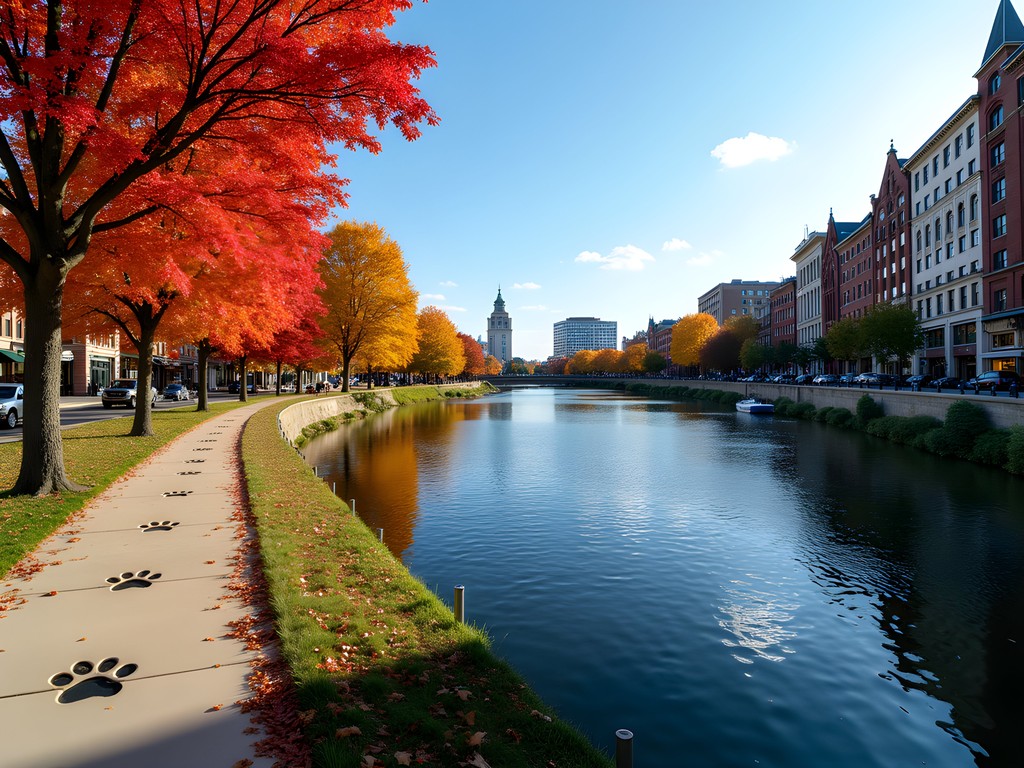
💡 Pro Tips
- Download the Fox Trot Trail map from the Appleton Downtown website before your visit
- Plan your walk to end near Houdini Plaza for easy access to dining options
- Look for the subtle geological references in several of the public art pieces
Culinary Geology: Local Flavors with Scientific Precision
While my professional documentation typically focuses on geological formations rather than culinary creations, I approach both with similar analytical rigor. Appleton's food scene, though modest in scale, demonstrates a precision and attention to detail that impressed my quality-oriented sensibilities.
At Rye Restaurant, located in a repurposed flatiron building downtown, I observed how local geological features influence the menu. The restaurant sources ingredients from farms situated on the region's distinctive glacial till soil, which imparts specific characteristics to produce. The chef explained how the mineral composition of local water—influenced by the underlying geology—affects everything from their bread fermentation to beer production. This systematic connection between geology and gastronomy mirrors relationships I've documented in volcanic regions, where soil composition dramatically impacts agricultural products.
For coffee enthusiasts, Tempest Coffee Collective applies scientific precision to their brewing methods. Using my digital thermometer, which I typically employ for measuring subtle temperature variations in geothermal features, I verified their pour-over water temperature maintained a consistent 205°F—the kind of methodical consistency I appreciate in both volcanic monitoring and beverage preparation.
Appleton's farmers market (Saturdays on College Avenue) offers another perspective on local geology through agriculture. Speaking with vendors, I learned how the Fox River Valley's microclimate—a direct result of its topographical features—creates ideal conditions for specific crops. One maple syrup producer detailed how the region's particular freeze-thaw cycle, influenced by the river valley's air circulation patterns, affects sap production and flavor profiles.
For couples seeking connection through shared culinary experiences, these establishments offer both excellent food and conversation-starting insights into how local geology shapes regional flavors—a dimension of terroir rarely discussed but fascinating for the analytically minded visitor.

💡 Pro Tips
- Ask restaurant staff about locally sourced ingredients and their connection to regional soil conditions
- Visit the Saturday farmers market on College Avenue for direct interaction with local producers
- Try Wisconsin cheese varieties at Appleton Beer Factory to experience how regional dairy reflects local environmental conditions
Final Thoughts
Appleton may lack the dramatic geological features that typically draw my professional attention, but this weekend exploration revealed how even subtle topography shapes human development in profound ways. The Fox River Valley's glacial history provides the foundation for a community that has built layers of industrial heritage, cultural depth, and culinary identity upon its geological underpinnings. For couples seeking connection through shared discovery, Appleton offers an ideal laboratory for observing these human-environment interactions without requiring significant financial investment or technical expertise. As I methodically document volcanic landscapes worldwide, I'm reminded that all communities—whether beside calderas or glacial rivers—reflect an ongoing dialogue between natural features and human adaptation. Perhaps the most valuable aspect of exploring destinations beyond my usual parameters is the perspective it provides: the geological forces that shape our world operate on vastly different scales but remain fundamentally connected through time, space, and human experience.
✨ Key Takeaways
- Appleton's landscape reveals fascinating glacial history accessible to casual observers
- The city's industrial heritage and cultural institutions offer exceptional value for budget-conscious travelers
- Fall provides optimal conditions for exploring both natural features and urban attractions
- The interconnection between geology, industry, and culture creates a multifaceted weekend experience
📋 Practical Information
Best Time to Visit
September-October for optimal fall foliage and comfortable temperatures
Budget Estimate
$200-300 for a weekend (accommodations, meals, attractions)
Recommended Duration
2-3 days
Difficulty Level
Easy

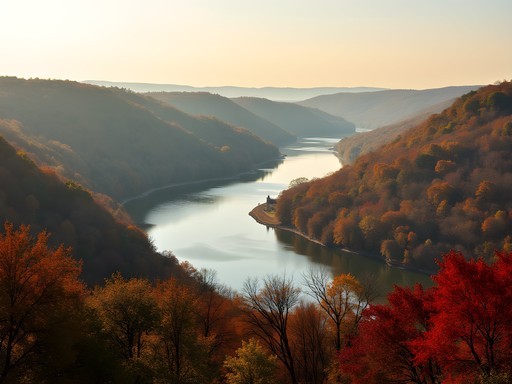
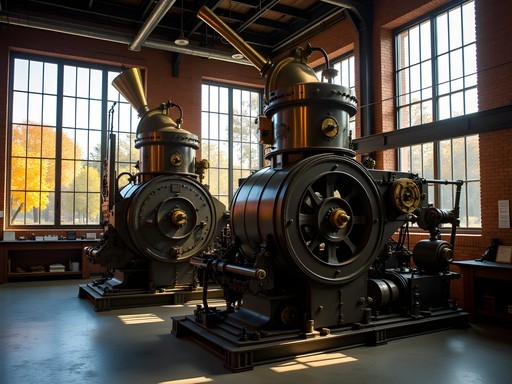
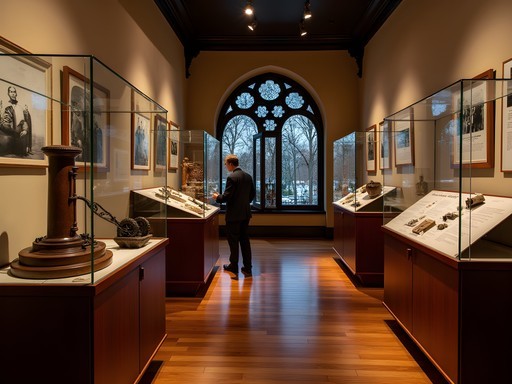








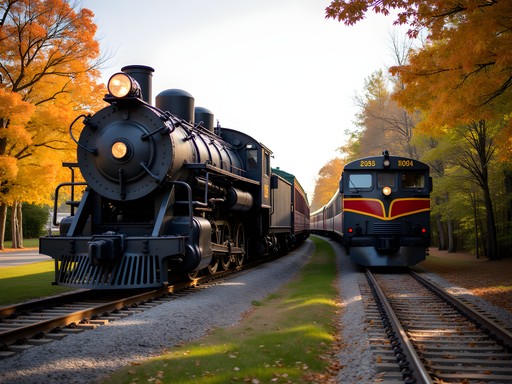



Comments
beachhero
THANK YOU for highlighting the Trout Museum! My wife and I visited last month and were blown away by the quality of exhibits in such a small city. The Houdini connection was completely unexpected. Also grabbed amazing craft beer at McFleshman's Brewing Co afterward - they have this great outdoor space right by the river. Appleton definitely deserves more attention!
Garrett Lawrence
So glad you enjoyed it! McFleshman's is a gem - I should have included that in the post. Their river view is perfect for watching the sunset.
Frank Carter
I appreciate how Garrett connected the geological history to the cultural development of Appleton. That's something I try to do in my own travels. When I visited last fall, I was fascinated by how the river powered the paper industry, which then attracted diverse communities and eventually led to this surprising cultural hub in the Midwest. Don't miss the Lawrence University campus - the architecture alone tells a story of the city's evolution. And if you're there during the right season, the Mile of Music festival transforms the whole downtown into one giant concert venue. It's like the geology created the conditions for both industry and art to flourish in this unexpected place.
Nicole Russell
I love when geologists turn their attention to seemingly ordinary landscapes! I visited Appleton last fall and was surprised by how much the paper industry shaped the entire region. The Paper Discovery Center was unexpectedly fascinating - they let you make your own sheet of paper! I'd add High Cliff State Park to this list too - it's just outside Appleton on Lake Winnebago and has some interesting limestone formations and Native American effigy mounds. The views of the lake from the observation tower are stunning, especially during fall colors. I tracked my hikes there with my hiking app and discovered some really interesting geological features that aren't on the main trail maps.
sunsetone
Just got back from Appleton and used this guide - spot on! The Fox Trot Trail was a highlight and we caught a temporary exhibition at the Trout Museum that was fantastic. One addition I'd make is to check out the farmers market if you're there on a Saturday morning (June-October). It's one of the best I've seen in a small city, and the local cheese vendors are incredible. Also, the geological markers along the river really do help you appreciate the landscape in a new way. Thanks for highlighting a place that deserves more attention!
skystar
Born and raised in Appleton and you nailed it! Don't forget the farmers market on Saturday mornings during summer!
Nicole Russell
Ooh, I love a good farmers market! Is it within walking distance of downtown?
skystar
It's right on College Avenue in the heart of downtown! One of the largest in the Midwest actually. Local produce, cheese curds, handmade crafts... totally worth planning your visit around it!
wanderlustwalker
I've driven through Wisconsin dozens of times but never thought to stop in Appleton! How walkable is the Fox Trot Trail? Is it something you could do in a morning or does it need a full day?
Garrett Lawrence
The main section is about 3.5 miles and pretty walkable in a morning! There are good coffee shops along the way for breaks too. The full trail system is more extensive if you want to make a day of it.
wanderlustwalker
Perfect! Adding this to my next road trip. Thanks!
Dylan Turner
Fascinating geological perspective on a place often overlooked by travel writers. I visited Appleton last year while researching Midwestern industrial heritage sites and found the juxtaposition of natural river valley formations with industrial development particularly compelling. The glacial history of the region explains so much about why these paper mills were established here in the first place. I'd add that visitors should consider taking the Fox River field guide which provides excellent context for understanding the landscape formations you're seeing. Did you get a chance to visit the nearby High Cliff State Park? It offers a more dramatic geological perspective of the same formations that shaped Appleton.
skyguy
Just got back from Appleton yesterday. That Fox Trot Trail was the highlight!
coffeelife
Great post! I'm intrigued by the Houdini connection - is there a specific museum or exhibit dedicated to him? Also, how walkable is downtown Appleton for exploring these spots?
Garrett Lawrence
The History Museum at the Castle has an amazing Houdini exhibit - he spent his childhood in Appleton. Downtown is very walkable! Most attractions are within a 10-15 minute walk of each other, and the Fox Trot Trail connects many of them with clear markers.
coollover
Planning to visit Appleton next month to see my sister who just moved there. Is the Trout Museum worth the visit for someone who's not usually into art? And any recommendations for local food spots that showcase the area's culture?
sunsetone
Not the author, but I visited Appleton last year. The Trout Museum is small but well-curated - even my husband who typically avoids art museums enjoyed it. For food, don't miss Rye Restaurant downtown for locally-sourced Wisconsin cuisine, and definitely try the cheese curds at any local pub!
coollover
Thanks for the tips! Will definitely try those cheese curds - my sister mentioned them too!
Venture X
Premium card with 2X miles, $300 travel credit, Priority Pass